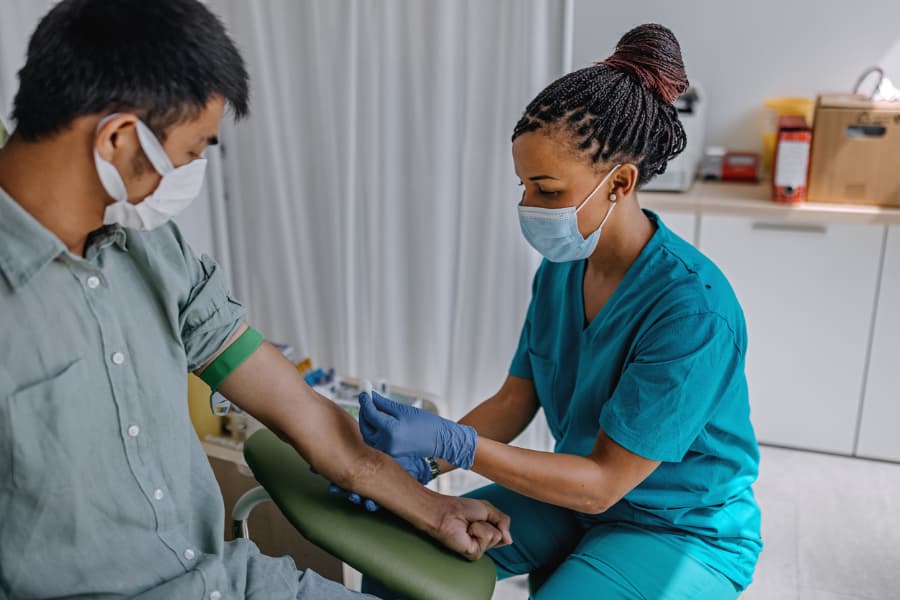Top Guidelines Of Northeast Medical Institute - New Haven Campus Phlebotomy Course & Cna Class
Top Guidelines Of Northeast Medical Institute - New Haven Campus Phlebotomy Course & Cna Class
Blog Article
An Unbiased View of Northeast Medical Institute - New Haven Campus Phlebotomy Course & Cna Class
Table of ContentsThe Basic Principles Of Northeast Medical Institute - New Haven Campus Phlebotomy Course & Cna Class Fascination About Northeast Medical Institute - New Haven Campus Phlebotomy Course & Cna ClassFacts About Northeast Medical Institute - New Haven Campus Phlebotomy Course & Cna Class RevealedNot known Details About Northeast Medical Institute - New Haven Campus Phlebotomy Course & Cna Class Everything about Northeast Medical Institute - New Haven Campus Phlebotomy Course & Cna ClassNortheast Medical Institute - New Haven Campus Phlebotomy Course & Cna Class Can Be Fun For Anyone
The use of such devices ought to be gone along with by various other infection avoidance and control practices, and training in their use. Not all safety and security devices are appropriate to phlebotomy. Prior to choosing a safety-engineered gadget, individuals ought to completely examine offered tools to establish their proper use, compatibility with existing phlebotomy techniques, and efficacy in protecting staff and patients (12, 33).For settings with low sources, price is a driving factor in purchase of safety-engineered gadgets. Where safety-engineered tools are not offered, experienced use of a needle and syringe is appropriate.
In the blood-sampling space for an outpatient department or clinic, provide a comfortable reclining couch with an arm rest.
Northeast Medical Institute - New Haven Campus Phlebotomy Course & Cna Class Can Be Fun For Anyone
Make certain that the indicators for blood tasting are clearly specified, either in a created procedure or in documented instructions (e.g. in a research laboratory type). At all times, adhere to the approaches for infection avoidance and control provided in Table 2.2. Infection avoidance and control practices. Collect all the devices needed for the treatment and area it within risk-free and very easy reach on a tray or trolley, guaranteeing that all the items are clearly noticeable.
Present yourself to the client, and ask the individual to mention their complete name. Examine that the research laboratory form matches the patient's identification (i.e. match the person's information with the laboratory form, to guarantee exact identification).
Make the patient comfortable in a supine setting (if possible). Place a clean paper or towel under the client's arm. Talk about the test to be done (see Annex F) and get verbal approval. The patient has a right to decline an examination at any moment prior to the blood tasting, so it is vital to make certain that the patient has actually recognized the treatment.
The Ultimate Guide To Northeast Medical Institute - New Haven Campus Phlebotomy Course & Cna Class
Prolong the client's arm and evaluate the antecubital fossa or lower arm. Find a blood vessel of a great size that is noticeable, straight and clear.
DO NOT place the needle where blood vessels are drawing away, since this raises the opportunity of a haematoma. Locating the vein will certainly aid in identifying the proper size of needle.
Haemolysis, contamination and existence of intravenous liquid and medicine can all modify the results (39. Nursing team and medical professionals might access main venous lines for samplings adhering to methods. Specimens from central lines lug a risk of contamination or incorrect research laboratory test results. It is appropriate, but not excellent, to attract blood specimens when very first introducing an in-dwelling venous device, prior to attaching the cannula to the intravenous fluids.
Fascination About Northeast Medical Institute - New Haven Campus Phlebotomy Course & Cna Class
Enable the location to completely dry. Failure to permit sufficient get in touch with time enhances the risk of contamination. DO NOT touch the cleansed site; in specific, DO NOT position a finger over the vein to lead the shaft of the subjected needle. It the site is touched, repeat the sanitation. Execute venepuncture as follows.
Ask More Bonuses the client to form a fist so the veins are more popular. Go into the blood vessel promptly at a 30 level angle or much less, and remain to introduce the needle along the capillary at the easiest angle of entrance - Phlebotomy Training. As soon as adequate blood has actually been collected, release the tourniquet BEFORE taking out the needle
The Best Guide To Northeast Medical Institute - New Haven Campus Phlebotomy Course & Cna Class
Withdraw the needle delicately and use mild stress to the site with a tidy gauze or dry cotton-wool sphere. Ask the client to hold the gauze or cotton woollen in position, with the arm expanded and raised. Ask the patient NOT to flex the arm, because doing so triggers a haematoma.

8 Simple Techniques For Northeast Medical Institute - New Haven Campus Phlebotomy Course & Cna Class
Do not press the syringe bettor because added pressure enhances the risk of haemolysis. Where feasible, keep the tubes in a rack and relocate the shelf in the direction of you. Inject downwards into the appropriate coloured stopper. DO NOT remove the stopper due to the fact that it will certainly launch the vacuum cleaner. If the sample tube does not have a rubber stopper, inject incredibly gradually right into television as minimizing the pressure and velocity utilized to transfer the sampling lowers the risk of haemolysis.

Report this page